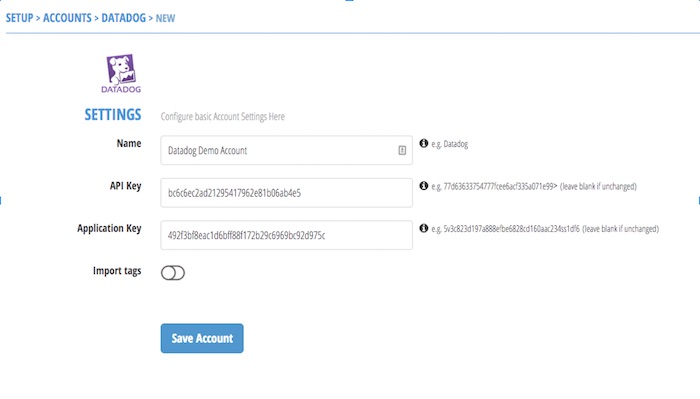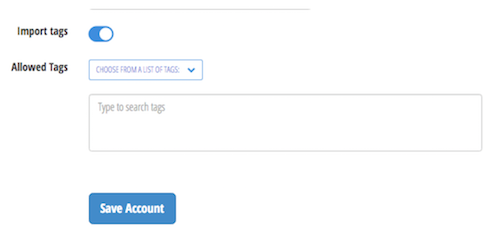- Essentials
- Getting Started
- Agent
- API
- APM Tracing
- Containers
- Dashboards
- Database Monitoring
- Datadog
- Datadog Site
- DevSecOps
- Incident Management
- Integrations
- Internal Developer Portal
- Logs
- Monitors
- Notebooks
- OpenTelemetry
- Profiler
- Search
- Session Replay
- Security
- Serverless for AWS Lambda
- Software Delivery
- Synthetic Monitoring and Testing
- Tags
- Workflow Automation
- Learning Center
- Support
- Glossary
- Standard Attributes
- Guides
- Agent
- Integrations
- Developers
- Authorization
- DogStatsD
- Custom Checks
- Integrations
- Build an Integration with Datadog
- Create an Agent-based Integration
- Create an API-based Integration
- Create a Log Pipeline
- Integration Assets Reference
- Build a Marketplace Offering
- Create an Integration Dashboard
- Create a Monitor Template
- Create a Cloud SIEM Detection Rule
- Install Agent Integration Developer Tool
- Service Checks
- IDE Plugins
- Community
- Guides
- OpenTelemetry
- Administrator's Guide
- API
- Partners
- Datadog Mobile App
- DDSQL Reference
- CoScreen
- CoTerm
- Remote Configuration
- Cloudcraft (Standalone)
- In The App
- Dashboards
- Notebooks
- DDSQL Editor
- Reference Tables
- Sheets
- Monitors and Alerting
- Watchdog
- Metrics
- Bits AI
- Internal Developer Portal
- Error Tracking
- Change Tracking
- Service Management
- Service Level Objectives
- Incident Management
- On-Call
- Status Pages
- Event Management
- Case Management
- Actions & Remediations
- Infrastructure
- Cloudcraft
- Resource Catalog
- Universal Service Monitoring
- End User Device Monitoring
- Hosts
- Containers
- Processes
- Serverless
- Network Monitoring
- Storage Management
- Cloud Cost
- Application Performance
- APM
- Continuous Profiler
- Database Monitoring
- Agent Integration Overhead
- Setup Architectures
- Setting Up Postgres
- Setting Up MySQL
- Setting Up SQL Server
- Setting Up Oracle
- Setting Up Amazon DocumentDB
- Setting Up MongoDB
- Connecting DBM and Traces
- Data Collected
- Exploring Database Hosts
- Exploring Query Metrics
- Exploring Query Samples
- Exploring Database Schemas
- Exploring Recommendations
- Troubleshooting
- Guides
- Data Streams Monitoring
- Data Jobs Monitoring
- Data Observability
- Digital Experience
- Real User Monitoring
- Synthetic Testing and Monitoring
- Continuous Testing
- Product Analytics
- Software Delivery
- CI Visibility
- CD Visibility
- Deployment Gates
- Test Optimization
- Code Coverage
- PR Gates
- DORA Metrics
- Feature Flags
- Security
- Security Overview
- Cloud SIEM
- Code Security
- Cloud Security
- App and API Protection
- Workload Protection
- Sensitive Data Scanner
- AI Observability
- Log Management
- Administration
CloudHealth
Overview
If you use both CloudHealth and Datadog, you can configure your CloudHealth account to collect per-instance resource usage metrics from Datadog. This helps CloudHealth gives you more accurate recommendations for adjusting your cloud resources.
This integration does NOT pull anything from CloudHealth into Datadog. It just helps CloudHealth poll your Datadog account for metrics.
Setup
Configuration
If you have not yet started optimizing your cloud with CloudHealth, first sign up for a risk-free 14 day trial. For existing CloudHealth customers, all you need to do is take these four simple steps to setup your Datadog integration in CloudHealth and to improve visibility across every dimension of their cloud environment.
In the CloudHealth Platform, Go to Setup -> Accounts -> Datadog and click New Account button on the top right corner.
Fill out the form with information from the Datadog account that you want to integrate:
- Name - friendly name, you can update this at any time.
- API Key - API keys are unique to your organization.
- Application Key - Application keys, in conjunction with your organization’s API key, give access to Datadog’s API. CloudHealth only queries Datadog for host and metric information, and does not write anything to Datadog.
- Import Tags - This allows you to import Datadog tags into the platform
Allowed tags - if “Import tags” is toggled on, tags are actively collected and you are provided an additional field to allow specific tags to be imported into CloudHealth. Select the tags that should be allowed to imported within the CloudHealth platform.
Data Collected
Metrics
The CloudHealth integration does not include metrics.
Events
The CloudHealth integration pushes Catchpoint events to your Datadog event stream.
Service Checks
The CloudHealth integration does not include any service checks.
Troubleshooting
Need help? Contact Datadog support.
Further Reading
Additional helpful documentation, links, and articles:


